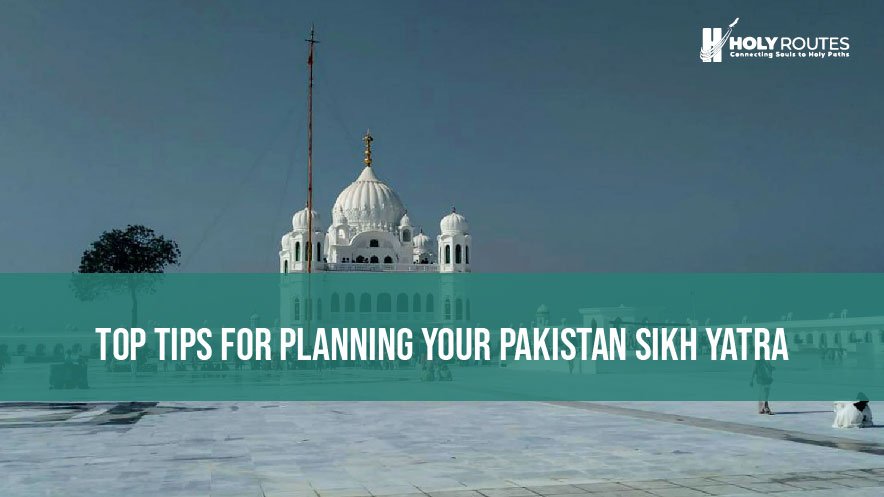How to connect with other travelers on a Sikh yatra
The Sikh yatra (pilgrimage) is more than a religious journey—it’s a transformative experience filled with cultural exchange, spiritual growth, and meaningful human connections. Whether you’re visiting the Golden Temple in Amritsar, Kartarpur Sahib in Pakistan, or Takht Sri Hazur Sahib in Nanded, the path of a Sikh yatra often brings you face-to-face with people from all over the world. For solo travelers, first-timers, or even experienced yatris, knowing how to connect with others on this sacred journey can enrich your experience beyond measure. In this blog, we’ll explore practical tips, digital tools, and cultural insights to help you build bonds with fellow travelers during your Sikh yatra. Let’s get started. 1. Understand the Spirit of Sangat: The Foundation of Connection Before diving into strategies, it’s important to grasp the concept of Sangat. In Sikhism, Sangat refers to a community of individuals coming together in the presence of the Guru. The Gurudwaras are designed to foster unity, service, and shared spirituality. When you’re on a Sikh yatra, this idea naturally encourages connection. Tip: Enter every Gurudwara with an open heart and a respectful attitude. Whether you’re serving in the Langar hall or participating in kirtan, remember that everyone is equal in the eyes of Waheguru. This humility lays the groundwork for genuine interactions. 2. Join Organized Sikh Yatra Tours or Groups If you’re new to the journey or traveling solo, consider joining an organized Sikh yatra tour. These groups often attract like-minded people from different parts of the world, making it easier to bond over shared values and experiences. Benefits of joining a group tour: Pre-planned itineraries reduce stress. Group meals, prayers, and accommodations foster camaraderie. Local guides offer insights that spark conversation and curiosity. You can find these tours through travel agencies, Gurudwaras in your home country, or Facebook groups for Sikh pilgrims. 3. Use Social Media and Travel Forums In the digital age, your next travel buddy might just be a click away. Platforms like Instagram, Facebook, and Reddit have communities dedicated to Sikh yatras. Useful Communities: Facebook Groups: Search for terms like “Sikh Pilgrimage Group,” “Sikh Travelers Network,” or “Yatra to Kartarpur Sahib.” Reddit Threads: Check subreddits like r/Sikh or r/solotravel. Instagram Hashtags: Follow or search for #SikhYatra, #SikhPilgrimage, or #GoldenTempleDiaries to find other travelers. Pro Tip: Before your trip, post about your yatra plans with the right hashtags. This can attract responses from others planning a similar journey. 4. Stay in Gurudwara Accommodations (Sarai) Gurudwaras typically offer Sarai (rest houses) for pilgrims, and staying in one puts you in direct contact with fellow yatris. The environment is communal, and many Sarais host people from all over India and abroad. How to connect while staying in a Sarai: Join in sewa (voluntary service) in the kitchen or cleaning areas. Offer to help new arrivals or elderly pilgrims. Spend time in the common halls where pilgrims gather to relax or reflect. Tip: Some major Gurudwaras like Harmandir Sahib have notice boards where yatris post their hometowns and messages—use this to find people from similar regions. 5. Participate in Langar and Sewa One of the easiest ways to make connections on a Sikh yatra is by serving or sharing a meal with others in Langar. This free community kitchen is a hallmark of Sikhism and welcomes everyone regardless of background. Opportunities for connection: Strike up conversations while chopping vegetables or washing dishes. Sit beside someone new in the Langar hall and greet them with “Sat Sri Akal.” Share your yatra story or ask others where they’re from. Bonus: Working together in service often leads to authentic and memorable friendships. 6. Attend Kirtan, Lectures, and Camps Throughout your yatra, you may find spiritual lectures, kirtan performances, or youth camps organized at major Gurudwaras. These events attract people who are eager to connect on a deeper level. How to use this to connect: Attend regularly and introduce yourself to others during breaks. Ask thoughtful questions after a lecture—it opens the door to discussion. If you’re musically inclined, offer to join in singing or playing an instrument. These shared spiritual experiences often create lasting emotional bonds. 7. Learn and Share Local Languages and Customs Sikh yatras span across multiple states and countries, from Punjab to Maharashtra and even into Pakistan. Learning a few key phrases in Punjabi, Hindi, or Urdu can help break the ice and earn respect. Examples: “Sat Sri Akal” (greeting) “Tusi kitthon aaye ho?” – “Where are you from?” “Main ikla travel kar reha haan.” – “I’m traveling alone.” In return, teach others phrases from your own language or culture—it sparks curiosity and connection. 8. Share and Listen to Stories Pilgrimages are deeply emotional journeys. Everyone has a story—why they’re on the yatra, what they’re praying for, or how the Guru changed their life. Be open to listening and, when comfortable, share your own. Ways to create space for stories: Host a casual evening chat at your Sarai. Offer to take someone’s photo and ask about their journey. Ask open-ended questions like, “What has been the most meaningful part of your yatra so far?” You’ll be surprised how often these stories turn into deep friendships. 9. Practice Cultural Sensitivity and Respect Respecting diverse customs, attire, and practices is key to connecting with others. Always dress modestly, cover your head in Gurudwaras, and avoid loud behavior in sacred spaces. Don’ts: Don’t interrupt people during prayer. Don’t take selfies in prayer halls. Don’t criticize rituals you don’t understand. A respectful attitude draws people toward you and creates a safe environment for conversation. 10. Stay Connected After the Yatra Once your journey ends, keep the friendships alive. Add your new connections on WhatsApp, Instagram, or email. You never know when your paths might cross again—perhaps on another yatra, a Gurmat camp, or even in your hometown. Ideas to stay connected: Create a WhatsApp group for your yatra batch. Share a digital photo album with everyone. Plan a virtual “reunion” or meet-up at a local Gurudwara. Maintaining these connections helps extend the spiritual





